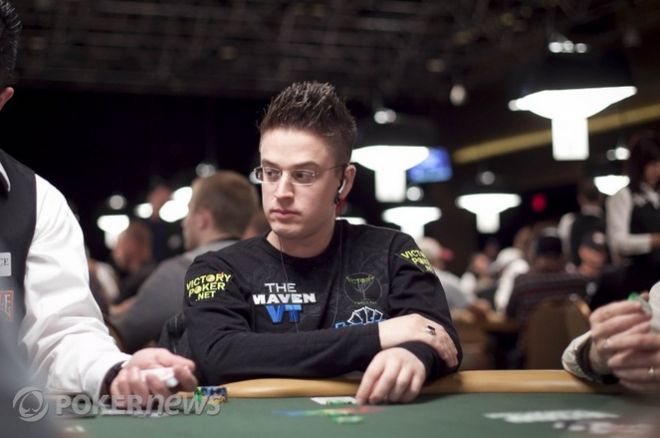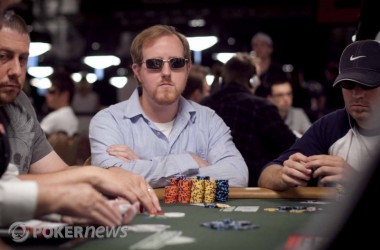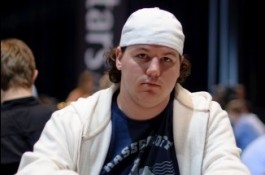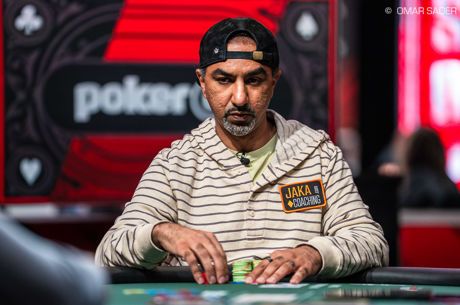HUD Basics with David ��The Maven�� Chicotsky Part 2

Last week, we talked to David Chicotsky for Part 1 on HUD basics wherein he talked about understanding the basic numbers, personality types, as well as aggregate and in-session numbers. We wouldn't want to leave you hanging, so here is Part 2.
We��ve talked about how to read other players, but HUDs also help you keep track of your table image, as well, right?
Right. Let��s say you��re in a close spot. He��s got X-amount blinds, and I��ve got X-amount of blinds, and I��m looking to raise all-in. There are a lot of reasons to do it and a lot of reasons not to do it. If the play is very break-even, and I can��t decide whether to make the play or not, I��ll look at my stats for the particular tournament. If I��ve only reraised say 2 percent of the time, and I��ve been really tight, that might be reason enough to make that play. Keep in mind, I could be playing across 15 tournaments, and within two seconds I can say, ��Oh I��ve been playing tight here. Or oh I��ve been playing intermediate here.�� So not only is it helping you gauge how your opponents are playing, it��s helping you gauge how your opponents perceive you.
Of course, accuracy increases with sample size, so when can you start relying on the numbers?
I always say, ��The more, the merrier.�� The more hands you can get, the better, but there��s an issue here. Most people don��t take the information and run with it. I always tell my students to use what they can, but there is a conflict with the way the brain is wired. What I mean by that is everyone��s brain is wired by a lot of those survival instincts and mechanisms which works against you in tournament poker.
Here��s an example. Let��s say a guy is at your table for 12 hands, and he��s raised twice. When I see him raise again, I��ll add that and say, ��OK, he��s raised 3 out of 13 times.�� That��s right around 22 to 23 percent. Right then and there, I��m willing to make a play against him. I��m willing to take that information and run with it. Poker is a game of incomplete information. However, because peoples�� brains are wired for survival, what they want to do is always reconfirm that a player is loose. Once you get an inkling that a player is loose, go with it. Don��t wait 10 to 15 minutes or three or four hands to confirm he��s loose. The problem with confirming a player is loose is that the player probably knows that you have confirmed it by then. You��re better off reacting earlier.
To answer your question, I��d say that a lot of players disregard the numbers because there are not enough hands in their mind. I��ll just say this, if a player has limped two or three times in an orbit, he��s loose passive. If a player comes in during the first 10 hands for a raise multiple times, he��s loose. If someone doesn��t play a hand the first 10 hands, he��s probably tight. The way I look at it is, I consider myself a loose aggressive player, and I know that when I��m at a table, in the first 10 to 15 hands, I know almost for sure, that I would have raised at least once or twice. It��s all about taking a small bit of information and using it. It��s so important to have that bit of due diligence.
The sum equals more than the parts. If I have the Total Agression Factor, the Attempt to Steal, how often he c-bets, how often he folds to a c-bet, how big his gap is, etc., all I need is a tiny bit of each one and I can add it all together which will give me a very important snapshot of how a player plays. I actually have everything color coded with set parameters for all 21 numbers I use. Once I scan those numbers and get an overview, then I��ll go more in depth. Now remember, those 21 numbers over three lines is my HUD. To go in depth, I can click on certain numbers to find more. I click on ��Flop statics,�� and find his ��Fold to Three-bet on flop�� and how often and from what positions. I��ll narrow it down to the specific type of play it is, and I��m comfortable enough with all the numbers that I can figure out what the three, four, or five most important numbers are to focus in on for a specific play.
Does relying on the numbers make poker more or less fun for you?
I think it��s way more fun. There��s so much more to focus in on. There��s way more research. It��s kind of like baseball. Someone who says that watching baseball on TV is boring probably doesn��t know much about baseball. Baseball is much more fun to watch for a fan. Why? Because they know all the details. They know when a pitcher sets up inside but misses outside. They will know if the shift is on, on defense. They��ll look at the runner on first and think about whether he has a big lead or a small lead and what his statistics are. It��s the same thing in poker. Also, by knowing the PokerTracker stats, you��ll be able to avoid a lot of tenuous situations where you would have gotten yourself into trouble, and you��re also able to make a lot more plays.
I think a lot of poker players, myself included, are big fans of progress. The fun part about poker is that you see yourself evolving. It��s the same thing with PokerTracker. You��re going to start with four numbers: the Voluntarily Put In Pot, the Preflop Raise, the Total Aggression Factor, and Number of Hands. Then as you get better, you add a second line, then a third line, and so forth. As you get better, you��re going to add more and more things to your arsenal.
What advice would you give to players who are just starting with a HUD? Is it mostly just learning to trust the numbers?
Think of it like this. Think of it like letting the HUD decide what to do for you. If you��re running the PokerTracker, and it says a guy is raising 30 percent of the time preflop, that��s a cue that says you need to reraise more often. If the guy to your left is folding his big blind 95 percent of the time, you need to be raising six-seven offsuit on the button. See, you��re not raising six-seven offsuit on the button because you want to, you��re raising it because the HUD told you that you��re supposed to. It��s there to tell you want to do. Anytime you cross, or go against the PokerTracker, you��re probably going to receive some kind of pain. If you decide to raise into a guy with a 40-point gap that only folds his big blind 20 percent of the time, don��t be surprised when he calls out of the big blind. You��re able to justify everything you do based on their numbers.
Now, I must put in a stipulation. A lot of what I do and a lot of what I teach is in relation to their chip stack. For example, a stack of 15 to 20 big blinds is the ideal reraise all-in stack. So, I��m going to look to reraise all in between those chip parameters more or less on other players�� numbers. Not only do I need loose PokerTrack numbers on someone, but I also need an amicable stack that is appropriate. A lot of the plays you can and can��t make are determined by the numbers, but also in relation to your and their chip stack. You need to know what to do when you have 14 blinds, 18 blinds. What happens when you get up to 29 blinds? What if you have 50 blinds and your opponent has 30 blinds? How you and your opponent are stacked up along with the PokerTracker numbers affect your decisions.
Follow us on twitter for up-to-the-minute news.








